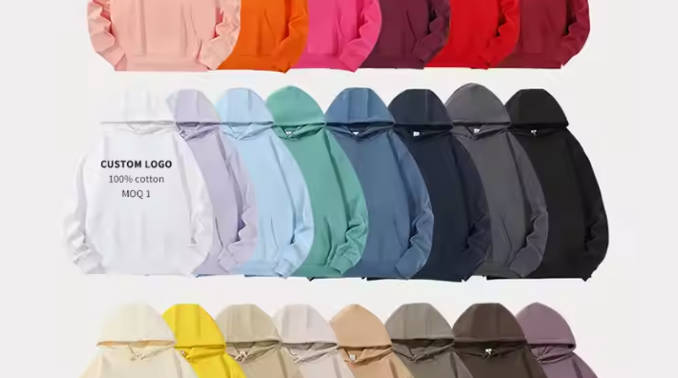For stores and companies hoping to take advantage of the market for warm and fashionable clothing, wholesale sweaters provide a profitable opportunity. From finding and choosing the best materials to comprehending the production process and making wise purchases, this thorough guide will assist you in navigating the complexities of wholesale knitwear.
Wholesale Sweaters: Understanding the Market
The worldwide market for wholesale sweaters is vibrant and constantly changing. It is influenced by things like customer tastes, fashion trends, and the state of the economy. The market is divided into end-user, style, and material segments. Wool, cashmere, cotton, and synthetic fibers are among the most widely used materials. Trendy cardigans and turtlenecks are among the styles, as are traditional crewnecks and V-necks. Men, women, and children are examples of end users.
The worldwide sweater market was estimated to be worth $120 billion in 2023. With a 4.5% compound annual growth rate, it is anticipated to reach $150 billion by 2028. Both the growing desire for stylish but comfortable apparel and the rising disposable incomes in emerging nations are responsible for this increase. The biggest sweater markets are in North America and Europe, with Asia Pacific coming in second. Because of the region’s fast urbanization and changing lifestyles, the Asia Pacific market is anticipated to develop at the fastest pace in the upcoming years.
Wholesale Sweaters: Sourcing and Materials
Sourcing wholesale sweaters involves identifying reliable suppliers who offer quality products at competitive prices. Several factors must be considered when choosing a supplier, including their reputation, experience, production capacity, and ethical practices. It’s essential to partner with suppliers who adhere to fair labor standards and environmentally sustainable practices.
Sweaters are crafted from various materials, each with unique properties. Natural fibers like wool and cashmere offer excellent insulation and moisture-wicking capabilities. Wool fibers have a natural crimp that creates air pockets, trapping heat and keeping the wearer warm. Cashmere, derived from the soft undercoat of Cashmere goats, is exceptionally soft, lightweight, and warm. Cotton is a breathable and comfortable option, suitable for milder temperatures. Synthetic fibers like acrylic and polyester are durable, wrinkle-resistant, and often more affordable than natural fibers. These fibers can be engineered to mimic the properties of natural fibers, offering a combination of warmth, softness, and durability.
Wholesale Sweaters: The Manufacturing Process
The manufacturing process for wholesale sweaters involves several intricate steps. It begins with the selection and preparation of raw materials. Natural fibers like wool and cotton are cleaned, carded, and spun into yarn. Synthetic fibers are created through chemical processes and then extruded into filaments. The yarn is then knitted into fabric using specialized knitting machines. These machines interlock loops of yarn to create the desired fabric structure. Different knitting techniques produce various textures and patterns.
Once the fabric is knitted, it is cut and sewn into the desired sweater shape. This involves creating the individual panels of the sweater, such as the front, back, sleeves, and collar. These panels are then carefully sewn together using industrial sewing machines. After assembly, the sweaters undergo finishing processes, which may include washing, steaming, and pressing. These processes ensure the sweaters have the desired appearance, feel, and dimensions. Quality control checks are conducted throughout the manufacturing process to maintain high standards and ensure that the final products meet the required specifications.
Wholesale Sweaters: Making Informed Purchasing Decisions
Making informed purchasing decisions requires careful consideration of several factors. Businesses need to assess their target market, sales channels, and inventory management capabilities. It’s crucial to determine the desired styles, sizes, and colors based on market demand and customer preferences. Ordering a variety of sizes and colors can cater to a broader customer base.
Pricing is another critical factor. Businesses must analyze the cost of goods, shipping, and handling to determine the optimal selling price. It’s essential to strike a balance between profitability and competitiveness. Minimum order quantities (MOQs) should also be considered. Many wholesalers impose MOQs, which can vary depending on the supplier and the specific product. Businesses need to ensure that they can meet the MOQs while managing their inventory effectively.
Conclusion
Wholesale sweaters offer a significant opportunity for businesses to enhance their product offerings and cater to the growing demand for fashionable and functional apparel. By understanding the market dynamics, sourcing strategies, manufacturing process, and key purchasing considerations, businesses can make informed decisions and maximize their return on investment. Building strong relationships with reliable suppliers and staying abreast of the latest fashion trends can further contribute to success in the wholesale sweater business.


